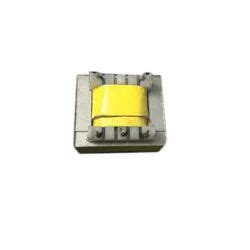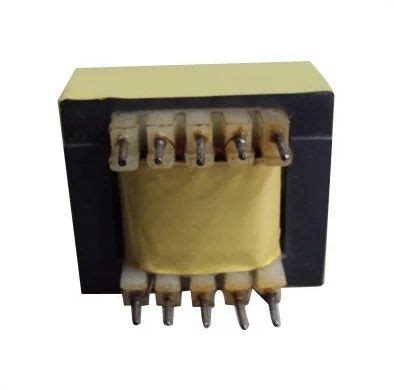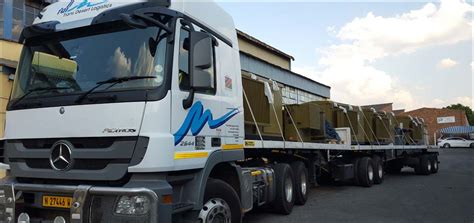What are PCB Transformers?
PCB mount transformers, also known as printed circuit board transformers, are specialized electrical components designed to be directly mounted onto printed circuit boards (PCBs). These transformers play a crucial role in various electronic applications, such as power conversion, signal isolation, and voltage regulation. Unlike traditional transformers that are separate from the circuit board, PCB transformers are compact, efficient, and can be easily integrated into the PCB design.
Key Features of PCB Transformers
- Compact Size: PCB transformers are designed to be small and compact, allowing for efficient use of PCB space.
- Surface Mount Design: These transformers are manufactured with surface mount technology (SMT), enabling easy assembly onto the PCB using standard pick-and-place machines and reflow soldering processes.
- High Efficiency: PCB transformers offer high efficiency in power conversion and signal transmission, minimizing power losses and heat generation.
- Customizable: Manufacturers can customize PCB transformers to meet specific application requirements, such as voltage ratios, power ratings, and frequency response.
Types of PCB Transformers
1. Step-Up and Step-Down Transformers
Step-up and step-down PCB transformers are used to change the voltage level of an electrical signal. Step-up transformers increase the output voltage, while step-down transformers decrease it. These transformers are commonly used in power supply circuits, battery charging systems, and voltage regulation applications.
2. Isolation Transformers
Isolation PCB transformers provide electrical isolation between two circuits while allowing signal or power transmission. They help protect sensitive electronic components from voltage spikes, ground loops, and other electrical disturbances. Isolation transformers are essential in medical equipment, industrial control systems, and communication interfaces.
3. Pulse Transformers
Pulse PCB transformers are designed to transmit short electrical pulses with minimal distortion. They are used in various applications, such as power converter circuits, telecommunication systems, and high-speed digital interfaces. Pulse transformers ensure accurate timing and shape of the transmitted pulses.
4. Audio Transformers
Audio PCB transformers are specialized components used in audio signal processing applications. They provide impedance matching, signal isolation, and balanced-to-unbalanced signal conversion. Audio transformers are commonly found in microphone preamps, audio mixers, and sound cards.

Advantages of Using PCB Transformers
- Space Savings: PCB transformers eliminate the need for separate transformer housing, reducing the overall size of the electronic device.
- Improved Reliability: By integrating transformers directly onto the PCB, the risk of connection failures and mechanical stress is minimized, resulting in enhanced reliability.
- Reduced Assembly Costs: Surface mount PCB transformers simplify the assembly process, reducing labor costs and increasing production efficiency.
- Enhanced Signal Integrity: PCB transformers minimize signal distortion and noise by reducing the distance between the transformer and other circuit components.
- Customization Options: PCB transformers can be customized to meet specific electrical and mechanical requirements, allowing for optimal performance in a given application.

Choosing the Right PCB Transformer
When selecting a PCB transformer for your application, consider the following factors:
- Voltage Ratio: Determine the required input and output voltage levels to choose a transformer with the appropriate turns ratio.
- Power Rating: Ensure that the transformer can handle the expected power requirements of your circuit without exceeding its rated capacity.
- Frequency Response: Consider the frequency range of the signals you need to transmit or isolate and choose a transformer with suitable frequency response characteristics.
- Isolation Voltage: For isolation transformers, verify that the transformer provides sufficient isolation voltage to protect your circuit from electrical disturbances.
- PCB Footprint: Make sure the transformer’s footprint is compatible with your PCB layout and meets the required clearance and creepage distances.

PCB Transformer Manufacturing Process
The manufacturing process of PCB transformers involves several key steps:
- Core Selection: The transformer core is chosen based on the desired electrical properties, such as permeability, saturation flux density, and temperature stability.
- Winding: The primary and secondary windings are wound around the core using enameled copper wire or other suitable materials. The number of turns and wire gauge are determined by the desired voltage ratio and current capacity.
- Insulation: The windings are insulated from each other and the core using materials like polyester film, nomex paper, or other high-dielectric materials to prevent short circuits and ensure reliable operation.
- Termination: The transformer leads are terminated using methods like pin terminals, surface mount pads, or flying leads, depending on the PCB Mounting requirements.
- Encapsulation: The transformer assembly is often encapsulated in epoxy resin or other protective materials to provide mechanical stability, moisture resistance, and electrical insulation.
- Testing: Rigorous testing is performed to verify the transformer’s electrical characteristics, such as inductance, turns ratio, insulation resistance, and dielectric strength, ensuring compliance with the specified requirements.
Applications of PCB Transformers
PCB transformers find applications in a wide range of electronic devices and systems, including:
- Power Supplies: PCB transformers are used in switch-mode power supplies (SMPS) to convert AC mains voltage to the desired DC voltage levels for electronic components.
- Battery chargers: Step-down PCB transformers are employed in battery charging circuits to convert higher voltage levels to the appropriate charging voltage for batteries.
- Isolated Communication Interfaces: Isolation PCB transformers are used in communication interfaces, such as RS-485, CAN Bus, and Ethernet, to provide electrical isolation and protect against ground loops and voltage surges.
- Medical Equipment: Isolation PCB transformers are critical in medical devices to ensure patient safety by isolating the patient-connected circuits from the mains power supply.
- Audio Systems: Audio PCB transformers are used in professional audio equipment, such as microphone preamps, mixers, and audio interfaces, for signal isolation and impedance matching.
Frequently Asked Questions (FAQ)
-
Q: What is the difference between a PCB transformer and a regular transformer?
A: PCB transformers are designed to be directly mounted onto a printed circuit board, whereas regular transformers are standalone components that are connected to the circuit board through wires or cables. PCB transformers are compact, efficient, and offer improved reliability compared to regular transformers. -
Q: Can PCB transformers be used for high-power applications?
A: Yes, PCB transformers can be designed for high-power applications. However, the power handling capability depends on factors such as the transformer core material, winding design, and thermal management. High-power PCB transformers may require additional cooling measures, such as heatsinks or forced air cooling, to dissipate the generated heat effectively. -
Q: How do I select the appropriate voltage ratio for a PCB transformer?
A: The voltage ratio of a PCB transformer is determined by the turns ratio between the primary and secondary windings. To select the appropriate voltage ratio, consider the input voltage level and the desired output voltage level. For example, if you have a 24V input and require a 5V output, you would need a transformer with a turns ratio of approximately 4.8:1 (24V / 5V). -
Q: What are the common core materials used in PCB transformers?
A: PCB transformers can be constructed using various core materials, depending on the application requirements. Some common core materials include: - Ferrite: Ferrite cores are widely used for high-frequency applications due to their low core losses and high permeability.
- Iron Powder: Iron powder cores offer high saturation flux density and are suitable for high-current applications.
-
Nanocrystalline: Nanocrystalline cores provide excellent magnetic properties, low losses, and high permeability, making them suitable for high-efficiency transformers.
-
Q: How do I ensure proper isolation in a PCB transformer?
A: To ensure proper isolation in a PCB transformer, consider the following: - Choose a transformer with an appropriate isolation voltage rating that meets or exceeds the requirements of your application.
- Maintain sufficient creepage and clearance distances between the primary and secondary windings, as well as between the windings and the core.
- Use high-quality insulation materials, such as polyester film or nomex paper, to provide reliable insulation between the windings.
- Verify the transformer’s insulation resistance and dielectric strength through rigorous testing.
Conclusion
PCB mount transformers are essential components in modern electronic devices, offering compact size, high efficiency, and improved reliability. By understanding the types, advantages, and selection criteria of PCB transformers, engineers and designers can effectively integrate these transformers into their PCB designs. Whether it’s for power conversion, signal isolation, or voltage regulation, PCB transformers provide a reliable and customizable solution for a wide range of electronic applications.
When designing with PCB transformers, it’s crucial to carefully consider the electrical requirements, such as voltage ratio, power rating, and frequency response, to ensure optimal performance. Additionally, proper PCB layout techniques, including appropriate clearance and creepage distances, should be followed to maintain the transformer’s isolation and prevent electromagnetic interference (EMI).
As technology advances and electronic devices become more compact and efficient, the demand for high-quality PCB transformers continues to grow. Manufacturers are constantly developing new materials, winding techniques, and manufacturing processes to meet the evolving needs of the industry. By staying informed about the latest advancements in PCB transformer technology, engineers can design more reliable, efficient, and cost-effective electronic products.
In conclusion, PCB mount transformers play a vital role in the functioning and performance of modern electronic devices. By understanding their characteristics, selection criteria, and applications, engineers can effectively harness the power of these transformers to create innovative and reliable electronic solutions.

No responses yet